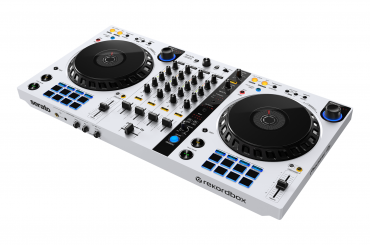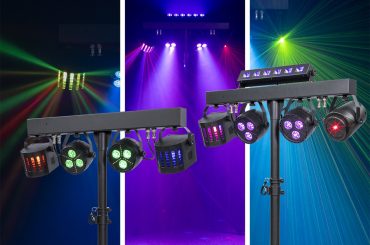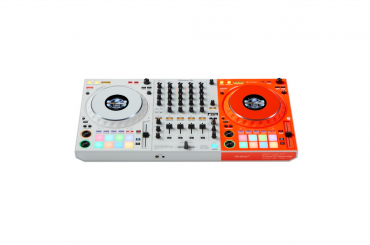For those of us who’ve been around long enough to remember those heady, early days of the Internet – say, 1992 – we’ll remember just how exciting it was to ponder where ubiquitous connectivity might take us.
At the time, of course, the Internet was quite far from ubiquitous, but as techie types began to tinker around online, one could easily see its potential. After the Internet was commercialized from its research-oriented roots, and it began to add users at a rapid pace, it started to fulfill that potential as a tool to improve and speed up communication.
Now, of course, it’s hard to imagine a world without things like e-mail, text messaging, videoconferencing (hi-def and free, no less), cloud storage, social media, and so on.
But despite the over two decades of promise, there seems to be one area of Internet-based communication that feels as if it’s still stuck in the dark ages: musical collaboration, and specifically, DAW (digital audio workstation) -based musical collaboration. That situation, however, seems poised to change.
DAW is one area of Internet-based musical collaboration that feels as if it’s still stuck in the dark ages — but that seems poised to change.
This subject hits pretty close to home for me. In the past couple of years, I’ve been collaborating on a wide range of music projects with my friend Nick Dahl, a percussionist who works across multiple genres. We’ve worked on music beds for videos, some EDM projects, and even some country projects. While Nick and I are both Denver-based, logistically, we live 45 minutes apart from each other, and it’s just not that easy to get together for in-person creative sessions. That fact often leaves us to work though the challenges of collaborating on projects online, and the issues we face are no better and no worse than two musicians working on opposite sides of the planet. So, when it came time to research and write this article, I could think of nobody more qualified to work with than Nick.
The following conversation is what we discovered over the past several months of looking at a few different DAWs and collaboration tools specifically for musicians.
– Wesley Bryant-King
Wes: So Nick, let’s start with the scope here. It seems that with online collaboration, there are basically four fundamental objectives:
- Getting files back and forth (cloud storage and sharing);
- Social networking (finding collaborators and/or interacting with collaborators);
- Live collaboration (working together as if in a virtual studio);
- Version control and rollback (although I suppose this could be a part of cloud storage, technically).
Sound about right?
Nick: Absolutely. Now I give credit to the fact that every musician has his/her own workflow, which runs the gamut of working inside and outside the box, and includes everything from pre-production to recording to post-production. There are what I call “static” needs that are universal to those collaborating from their DAWs, as well as the “dynamic” needs that pertain to each individual setup. Anyone who has tried collaborating remotely — regardless of DAW — has experienced the challenges of making local files available for their collaborator, or using their favorite third-party plugins that their collaborators don’t also own.
One more distinction I’ll make is between collaborating by trading projects back and forth but working on them independently, versus collaborating in the truly simultaneous sense of the word, such as jamming on instruments together or reviewing and making musical decisions in real-time as a team. I think in the context of our experimenting, we’ve focused primarily on the back-and-forth collaboration. After all, that’s enough of a challenge in itself! Technology has of course come a long way, but it has yet to deliver high-definition, latency- and hiccup-free audio streaming for a world-wide jam session (though I know this is being worked on among research universities)!
Wes: Truth! So, let’s talk about our own challenges. I’m curious: What’s the biggest challenge that you’ve had in collaborating with me or others online? I think that for me, the biggie is the process around file management. For example, if we’re sharing files through a cloud service like Dropbox or OneDrive, should I work from a locally synced folder directly, or copy stuff back and forth from a working folder where I normally store my music projects? Also, version control… what do I do if I’m just not ready to share something with you, or want to share one piece, but not another? Right now, dealing with all that is a totally manual process.
Nick: I agree with you on the tactical challenges of staying organized through versions and files. And I think what that amounts to is the challenge of getting into a collaborative flow. Just the same as a novice musician or producer, when one can’t work efficiently in their DAW, it becomes difficult to let their creative side do its thing and foster the cycle of musical ideas leading to more musical ideas. Collaborating online creates a whole new set of roadblocks to address: How do we share feedback, edits, files, and even the audio output from one system to another in real-time (or as close as we can get to real-time)?
When one can’t work efficiently in their DAW, it becomes difficult to let their creative side do its thing and foster the cycle of musical ideas leading to more musical ideas.
As musicians, producers, and engineers, we strive to cultivate a workflow that allows us to bring to reality the music in our heads, and we do that using the tools in front of us — keyboard and mouse, instruments, and other equipment. Currently, I find there are many limitations for us as online collaborators, but I’ve been very encouraged by some of the latest updates we’ve explored across a few of our favorite DAWs, which have taken a crack at enabling collaborators in this brave new frontier.
Wes: As have I. For this article, we had a chance to look into all of this through the lens of four different DAWs: Ableton Live (our usual common platform for music making), Steinberg’s Cubase, Avid’s Pro Tools, and Propellerhead’s Reason. I know we added Reason to the list primarily due to one of the social tools we looked at, Allihoopa, which was started by Propellerhead, and which is still largely limited to software that is (or was) developed by the company. We included Cubase and Pro Tools mostly because both have integrated features specifically for one or more angles of collaboration. But let’s start with what we know best from our own work: Ableton Live.
I think it’s worth mentioning that Ableton’s focus on collaboration within Live has been on live (pardon the pun) collaboration, as in multiple musicians in a studio or on-stage together. Ableton Link, the company’s protocol that’s been embraced by other software makers (including Propellerhead and Serato, among others), allows electronic musicians to stay in-sync in a performance setting, which is pretty cool. But for the type of collaboration we’re talking about here, like most DAWs, Live sort of leaves it to us to figure-out.
ABLETON LIVE
Nick: Right. As you know, Wes, I do a lot of online collaborating in Live with you and with other musicians, so it feels like we both know this approach pretty well. To be honest, it’s a lot of work. My standard approach is to use a cloud storage service like Dropbox or Google Drive. This allows us to share a project folder and all of its contents in a mutually accessible location. But having your project file in the cloud is really not enough to ensure a seamless collaboration. Our respective sound libraries are of course not stored in the same “shared folder” in the cloud, so any samples or recordings that we bring into the project require extra attention and management. Sometimes that’s as easy as selecting the trusty “collect-all-and-save” option, but other times it’s not that simple. If my samples are protected (whether physically or by licensing restrictions), my collaborator may still not be able to use them.
Wes: Which reminds me of another sample-related issue I know we’ve dealt with, which is recording takes. We’ve worked on some projects with vocals, recorded live instruments (like guitars), and so on, and each recording take generates an audio file. Depending on the sample rate and bit depth used, these audio files can be fairly large, and, of course, they’re stored to disk. With most DAWs, including Live, those takes remain on disk even if you remove them from the active project. For safety and integrity, that’s precisely the behavior I want — except those unused audio files can start to pile-up (online collaboration aside). When syncing everything to the cloud, that can start to clutter things up, too, and I know we both have cloud storage limits we have to work within.
Nick: Absolutely, and we’ve both had to be diligent about keeping the project footprint tidy. I know we’ve both experienced the dreaded “cloud-storage-is-full” issue, which breaks that creative workflow when you have to stop working on music, and start making file-by-file, clean-up decisions, before your latest work can be synced.
Wes: Yeah, we know that one well, indeed. So another challenge we’ve had — one by no means limited to Ableton Live, actually — is “plug-ins in common.” As you know, I have a few “go-to” plug-ins from third parties (vs. those provided in the box with the DAW), notably several from Native Instruments’ Komplete, as well as the analog modeler, Sylenth. As a drummer, you do as well.
The dreaded “cloud-storage-is-full” issue breaks creative workflow and you stop working on music, and start making file-by-file, clean-up decisions, before your latest work can be synced.
Nick: I do, indeed. For me, I often use Superior Drummer to lay down drums from my electronic kit, but if my collaborator doesn’t license this same software, they aren’t going to hear my tracks correctly, if at all — as is also the case with the ones you mentioned.
Wes: Yeah, and we’ve been fortunate with some of these “same-software” situations — but not so fortunate in others. Having to bounce tracks to audio, or “freeze” them in Ableton parlance, helps — but then whatever track that is, is locked-down, so it’s not editable by my collaborator. Beyond that, what would you say is the biggest challenge we’ve had with it?
Nick: File management, right? For example, stuff like versioning is usually just incrementing file names. But with a collaborator, reconciling the stuff they’ve done with the stuff I’ve done can be a real problem if we’ve both worked on a project at the same time. There’s just no easy way to get each of our additions or changes merged without exporting MIDI/audio from one side, and bringing it back in on the other.
Wes: That, or depending on how you’re managing your projects, perhaps using Ableton Live’s ability to access a project from the sidebar within the interface, and drag-and-drop individual tracks (or multiple tracks) from that project into the currently open project. It would help if we could simply open two projects, and copy and paste…
Nick: I wish it were that easy! The best you can hope for is what you just described: Access their project file, and bring in any new tracks that they’ve added. But that approach won’t cover changes to the master track, or help handle situations like bussing setups. And what happens if they tinkered with volume levels and other parameters on other tracks in the process of kneading their own additions into your project? Or, what if they decided to extend a section by four bars from the copy you were working on? When you bring those tracks into your version of the project, you could be in for some major clean-up headaches. And for me there’s an even worse price to pay, which is peace of mind. There’s really an issue if you don’t know that you are hearing the same exact project as your collaborator. There have been countless times that I’ve thought my collaborator and I were discussing the same project, only to realize down the line that one of us was missing either a sample, an effect, or in some cases an entire track!
There’s really an issue if you don’t know that you are hearing the same exact project as your collaborator.
Wes: So really, the bottom line to me is that there’s no perfect solution here when it comes to collaborating on an Ableton Live project. But in fairness to Ableton, we should point out that these issues are no different with most DAWs, whether it’s say, Bitwig (one of the DAWs we didn’t specifically look at for this article), or maybe even Reason, which we’ll talk about later.
Nick: Absolutely. At this point I feel like we’re on the precipice of some amazing new capabilities when it comes to virtual collaboration. But it seems the foreseeable future still holds some limitations that we must work within.
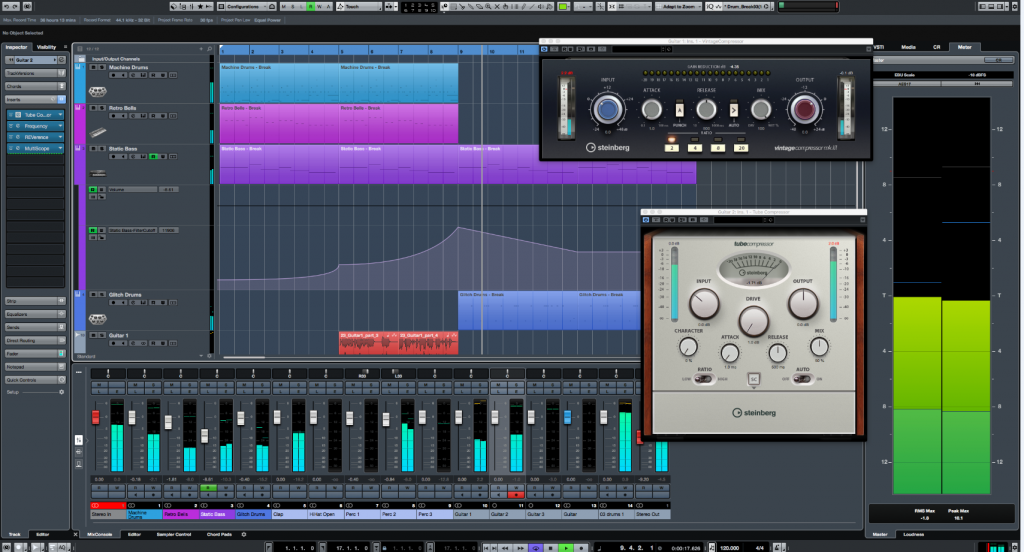
STEINBERG CUBASE
Wes: So, one of the other DAWs we looked at was Steinberg’s Cubase. They have some cool capabilities for collaboration.
Nick: Yeah, Cubase is pretty cool with what they’ve done, but it’s a little confusing to understand the terminology they used; they refer to all of it as VST Cloud. VST Cloud includes both VST Transit and VST Connect. VST Transit is the cloud storage and project management piece, and VST Connect is a live collaboration tool. Still with me?
Wes: It confused me when we were working with it, and it still does, but I suppose “VST” is Steinberg’s name to do with what they choose. But I also question the choice of applying the term “VST” to all of this; for most people, the term is synonymous with universality (e.g., “this DAW supports VST” when referring to plug-ins). But that criticism aside, they did do some pretty cool stuff here. VST Connect provides live video chat capabilities, along with the ability to remotely record parts from your collaborator, including audio and MIDI.
Nick: Absolutely. Going back to the bit I said about handing a project back and forth, as opposed to really making music simultaneously, Cubase has developed the ability for one collaborator to act as the engineer and record in the parts from a performer anywhere else in the world. Now even still, this is more of a one-way relationship — you have one collaborator routing and recording another, but it’s not the same as a drummer in Denver cutting takes with the bass player in New York when they really get the musical chemistry going. But by all means, it is a step in the right direction, and a great tool for any engineer or producer to be able to work with other musicians, no studio required.
Wes: It was really pretty cool, absolutely, and it seems like a solid foundation that Steinberg can build upon in future iterations of VST Connect. On the flip side of the Cubase collaboration coin, however, VST Transit didn’t seem to work the way we expected, and it was a bit confusing. It shows promise, and I liked that cloud storage was an integrated capability. But still, traffic (aka the amount of data uploaded and downloaded) and cloud-storage space were both limited, and there’s a separate payment required to expand that. But the most confusing part is the synchronization between local and cloud projects; they weren’t one in the same.
Nick: Exactly, and as we saw working in all of the DAWs, the fact that a local project and a related cloud project can be named differently made for some interesting confusion. Beyond that we had a bit of additional trouble getting changes to sync in Cubase; most of mine came over to you, but I know you had some issues in getting yours to sync up.
Wes: Yeah, and I know we also had some issues in getting things like VST plug-in settings to sync. But for the use case it seems most targeted at — a producer and a performer working together — Steinberg looks like it’s really gotten it down with a unique solution to enabling that. It might not have matched our specific collaboration use case, but you have to admit, VST Connect was pretty awesome.
Nick: It was! That live video chat capability integrated into the tool was a lot simpler than trying to use a separate video conference tool, and having to figure out all the audio configurations to make that work separate from the DAW itself. I think any Cubase users should be excited to see where Steinberg continues to take these capabilities.
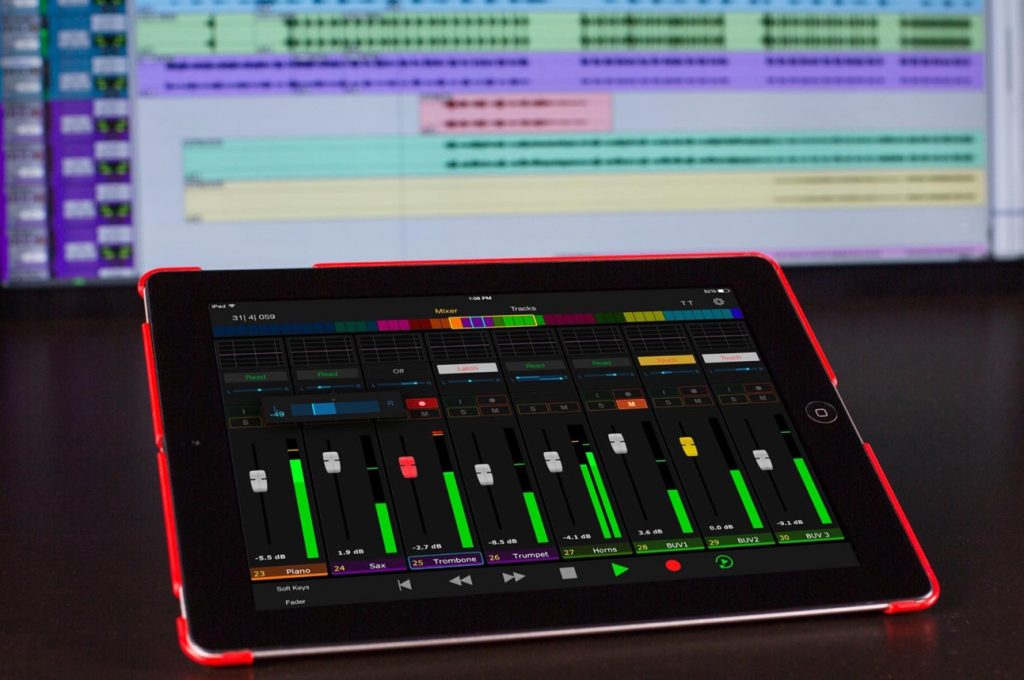
AVID PRO TOOLS
Wes: So, we also looked at Pro Tools. What did you like about it?
Nick: It seemed like Pro Tools’ implementation of collaboration most closely matched what you and I, and other collaborators I work with, need day-to-day, and is probably more what our readers are looking for, too: The ability for two producers to make changes to the same project as peers.
Wes: Exactly. What’s interesting about Pro Tools is that it supports that collaboration in real-time; you and I can be working on exactly the same project, at the very same moment, both of us making changes, and they’re immediately reflected and available to the other person at the track level.
Nick: Yeah, it was cool to see the little indicators in the user interface flag changes, and it was easy to bring those over when we were ready. It was also cool to see who is currently “in control” of a given track.
Wes: Exactly! In our case, to make the live collaboration itself easier, we needed to use Skype or FaceTime to communicate during our work sessions, and that introduced its own complications in terms of getting hardware configured properly. I think you did something similar, but I had to set up Skype to use the built-in hardware on my Mac for video and audio, while Pro Tools was, of course, set up to use my standard pro-audio interface. I’m guessing you did something similar?
Nick: Yeah, pretty much exactly that. But when we were testing this out, it was pretty cool that I could work on programming the beats, you could work on a melody line or something like that, and we could come up for air periodically, sync up the changes, listen to the result, agree on a direction, then mute Skype and go back at it.
Wes: Yeah, I really enjoyed that workflow, if I’m being honest. I can imagine worse ways to spend an evening than working on a common project from the comfort of our respective studios. It really modeled a collaborative, EDM-centric workflow pretty much perfectly. But even if we were time-shifting our collaboration, the functionality was just as smooth. We also were able to sync up the settings of plug-ins, too, right?
Nick: Yeah, all of that transmitted across perfectly, as well. Of course, we still had to have the plug-ins in common.
Wes: We did. You’ll remember we tried some stuff like having a MIDI track with a synth plug-in on it, and a separate audio rendering of the synth connected to that MIDI track as a way of letting us collaborate on the MIDI — I’d put a synth I have on it when I was working with the MIDI programming, and you’d place a different one you had. But obviously, there’s no way in any of the solutions we looked at to do much better than that.
Nick: Yep, and I’ll say in particular with Pro Tools, the ability to freeze and flatten bus tracks really helps in cases where it’s simpler to share stems, such as the instance you are referring to in which we each created tracks using a third-party synth that the other didn’t have. That’s about the smoothest way I’ve seen to deal with disparate plug-ins other than, perhaps, using a DAW where a lot of content is in the box, and sticking to that. Like our next DAW…
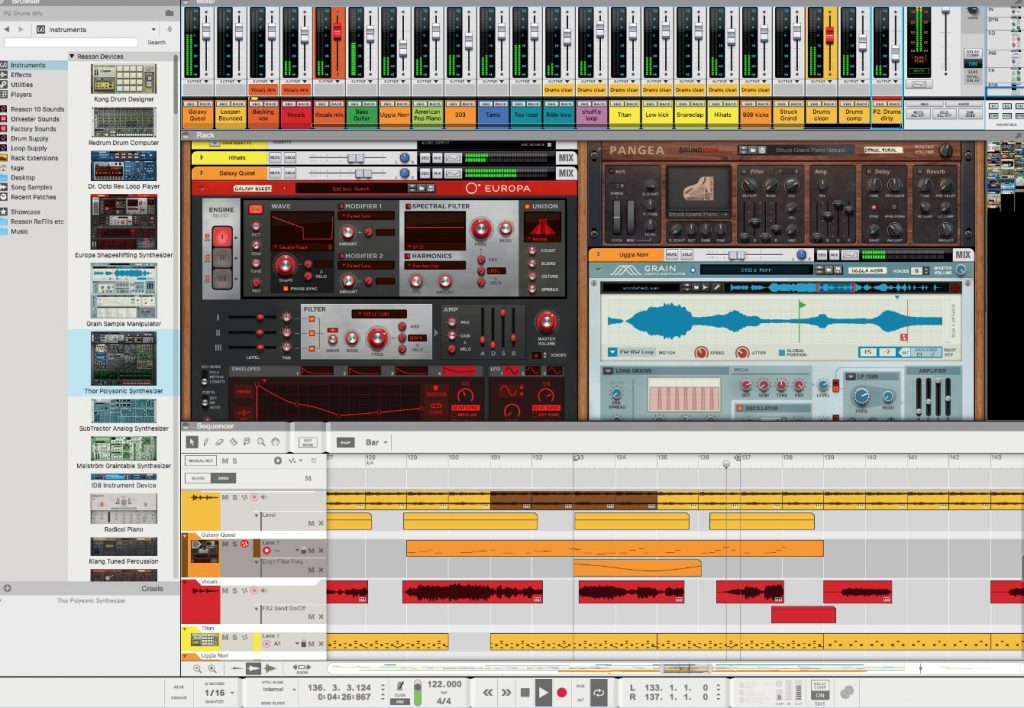
PROPELLERHEAD REASON
Wes: Exactly! Most of the reason we looked at Reason (another bad pun) is that Propellerhead started Allihoopa, the social music service we’ll provide some more information about below.
Nick: But it’s separate now, right?
Wes: Yup, it’s been spun out as a separate company. But essentially all of the projects open for collaboration (at least as we went to press on this article) on Allihoopa were made with Propellerhead’s software. Figure and Take, two apps formerly made by Propellerhead, transitioned to Allihoopa as well, and the new company makes its APIs available to other applications. So, at some point, we might see Ableton Live projects (for instance) on Allihoopa. But for now? Even though it’s separate, it still feels like it’s joined at the hip with Propellerhead in general, and Reason in particular.
Nick: I’d not had a chance to play with Reason before, but the fact it’s got so many instruments and so much content built-in seems like it at least partly addresses the “common plug-in” challenge.
Wes: It does in a lot of ways. I’m not sure if Reason truly has more instruments or content than other DAWs, but it feels that way. I’ve reviewed Reason for the magazine through multiple versions over the years, and I’ve always been impressed by the breadth and depth of the in-the-box functionality. But part of that is the fact that Reason for so very many years supported only its own proprietary plug-in format, so I tend to still think about it through that lens.
Nick: The recently added support for VSTs sort of changes that though…
Wes: It does, and apparently there’s been a lot of demand for VST support among Reason users. The thing is, while it’s great that VST support is available now, using a VST sort of breaks the model that Propellerhead created in Reason in terms of how things work — and work together. The non-VST instruments and effects still use that skeuomorphic design approach (meaning that the user interface is modeled visually after real-world hardware), and VSTs sit somewhat outside of that. But in any case, if you’re a producer who’s accustomed to Reason, and stick to the incredible array of instruments and content that come “in the box,” it does feel like it makes the collaboration road easier to navigate.
Nick: Except in terms of sharing the files and trying to control versions. That’s the same as it is most DAWs.
Wes: Just the same. So whether it’s pretending VST support never came to Reason, or limiting yourself to whatever’s in the box of the DAW of your choice, that’s one way to dealing with the “I’ve-got-this-and-you-don’t” challenge.
SOCIAL COLLABORATION
Nick: So let’s shift gears here a bit. If you’ve been creating music on your own thus far, perhaps collaboration itself is what you’re after. There are a number of sites that have emerged specifically for the purpose of enabling musicians to offer up projects for collaboration, browse others’ works-in-progress, download and manage project files, and communicate and socialize these projects to the greater online community.
Wes: You have to admit, this is a potentially pretty cool thing, depending on what you need and want in your musical life. The ones we took a quick look at include the aforementioned Allihoopa, along with Blend.io, and Kompoz. What were your initial reactions?
Nick: Each platform has its own way of doing things, but they’re not radically different from each other. Creating a profile, curating the feeds of projects you want to explore, previewing and downloading projects, and messaging collaborators, all come pretty much standard. If you’re looking for projects to work on, you can find the standard projects uploaded by individual artists, sponsored remix contests, school assignments, and even some work from pros out there. And, of course, you can submit your own work to the community to see what comes back. You may just find the instrumentalist, vocalist, engineer, etc., you were looking for!
Wes: I think my initial reaction to all of these services is that because the projects shared come from musicians of multiple experience levels, the general quality and readiness levels vary pretty wildly. While I think it’s great that less-seasoned musicians have the opportunity to participate in these ecosystems, and learn from the experiences, if you’re intentions and focus are more serious in nature, it means sifting through a lot of content to find things that might be of interest.
Nick: Absolutely. I may not have found the next Mozart waiting to work on a track with me, but it was a lot of fun to experience a wide-open digital marketplace for all kinds of musicians, who share the goal of meaningful collaboration. In terms of which site to choose, I noted a few differences between these platforms that can help a musician find the best one for their own experience level and goals.
For example, Blend.io has integration with Dropbox, and you can really set-up your project exactly how you’d like it handed to a collaborator. The exact tracks of audio and MIDI you’d like to share will be available for others (at least, that was my experience exchanging Ableton Live projects). But, of course, that means you are on the hook to clean up your projects and bounce or freeze any VSTs you might be using. Allihoopa, on the other hand, allows you to instantly open projects in Reason, which compiles the project audio onto a single audio track. There’s a trade off since collaborators may not be able to edit individual elements of the project they’ve downloaded, but it makes it very fast to hop in and start building onto someone else’s creation. And it’s equally as convenient to upload your new version of a project back to Allihoopa from within the Reason interface. Getting in and trying these sites out (for free!) will allow you to identify the best fit for your online collaboration needs.
Wes: Pretty cool, honestly. I think something else worth mentioning here is the possible end game with these collaborations. If you end-up with something you’re proud of, and want to release it, what are the licensing implications? These services break the traditional model. I could argue that the “traditional model” is perhaps in need of disruption, but from a legal perspective, songwriters and owners of recordings have rights, and it seems like this sort of social collaboration approach is great way to end-up in all sorts of entanglements — whether in a courtroom, or even in less formal ways. It’s probably worth embracing the possibility that your work could easily be taken, leveraged and profited from, and you may never know. But if you approach it as a learning and experience exercise?
Nick: It could be a lot of fun, for sure. But you make a good point, and as you said, it depends on your motivations and objectives.
VERSIONING & ROLLBACK
Wes: So Nick, let’s chat briefly about one more thing here: versioning and rollback. Versioning is the ability to store and manage multiple iterations — versions — of a file (or project) over time. Rollback is the ability to revert back to one of those previous iterations in the event that you take things in a direction you’re not happy with, and want to start over again — without starting over from scratch. Basically, pull up the last iteration you were happy with, and work from there. This seems pretty important with music projects in general, especially collaborative ones, in the event that one of the collaborators either heads in an unsatisfactory direction — or merely flubs something up by mistake. It happens.
Nick: It does! But let’s remember: This is an issue even when working solo. Unless you’re using a dedicated software tool of some sort, you don’t get versioning or rollback from your computer typically either, at least not automatically.
Wes: Good point. I know we both use Macs, and I’m a big fan of Time Machine; this is Apple’s integrated backup system in macOS, and it keeps iterative backups on a very regular basis. Through a browsing metaphor, you can go back in time (hence the name) and pull up any file, any folder, from a previous snapshot. It’s saved my butt a few times. But what about cloud services like Dropbox?
Nick: Dropbox has 30-day version histories of your documents. This can come in especially handy if you are working with someone who accidently saves over a project file that you were working on. But I’m also anticipating the DAWs to continue improving their own project versioning, such as Ableton is doing with Live 10.
Wes: I’m guessing other cloud-storage services might have something similar, and it seems that two things are obvious here:
- Figure out what your preferred cloud-storage service offers.
- Figure out how to use it before you start collaborating on projects through that service. It might well save the day at some point.
Nick: Exactly!
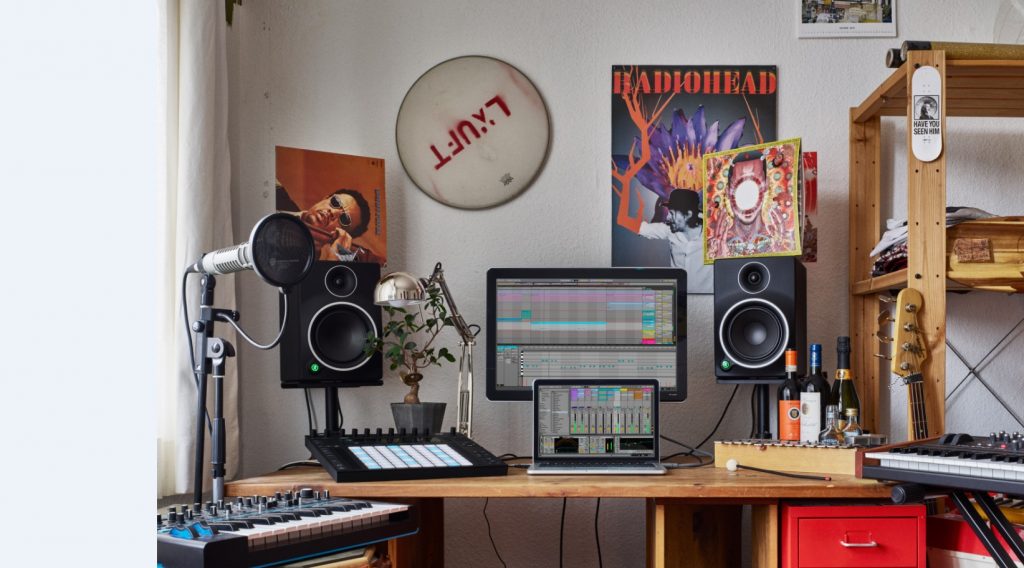
SUMMARY
Wes: So, Nick, if I could cut to the chase here, after all our learning of some of these DAWs for the first time, after countless hours of experimentation and trial-and-error and tinkering and challenges over the past several months, I think we can pretty much say at this point that the current state of the art leaves some things to be desired when it comes to musical collaboration. Agree?
Nick: I agree! This is where I lay out the ideal version of online collaboration that today I can only imagine: In a perfect world, I would have a project open on my end, and my collaborator would have the project open on their end, referencing the same cloud-based files. Changes could be synced in real-time, and we would be sure that we are hearing two identical versions of the project as we go — no missing samples or effects. We would have a smooth video chat to boot, without having to rewire the insides of our computer and DAW’s sound preferences every time we want to hop on and work. If we’re feeling a jam, we could sit down with our respective instruments and by the magic of technology stream high-definition stereo audio to each other with near-zero latency. Pie in the sky, maybe, but it feels like we may not be as far off from this future-state as it seems!
Wes: Yeah, the dream indeed… You summed it up perfectly for me as well. After taking a peek at all these DAWs and services, I’m jazzed about what some of the DAW creators are putting in place, and I think you’d agree that there’s really been no better time to make music and collaborate with others. But it still feels like the ideal universe is farther out on the horizon than I would have expected it to be in 2018, as I set out in the introduction to this article.
Many (if not all) of the technology tools needed for our mutual dream exist in some form or another, and maybe it’s only a matter of time before they start getting assembled under a single roof in one of the DAWs we looked at.
Until then? It looks like our collaboration sessions are going to continue to require a little more thought, and a little more creativity in terms of synthesizing solutions, than we might like. That said, it’s no less exciting — and no less cool — to work with others on a collaborative musical vision. And with that, I think you and I have some projects to go collaborate on. See you online…





